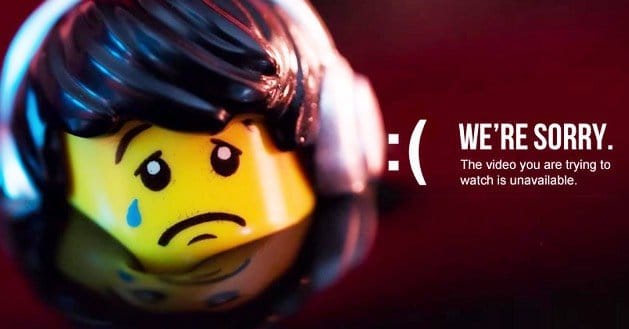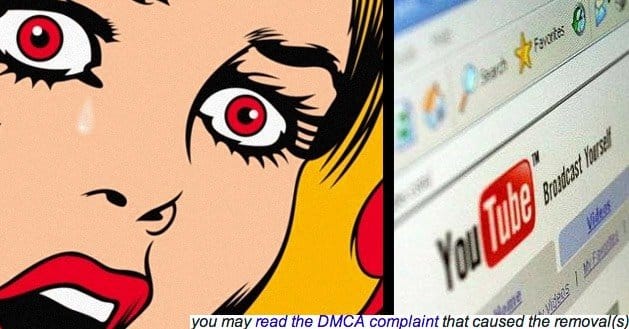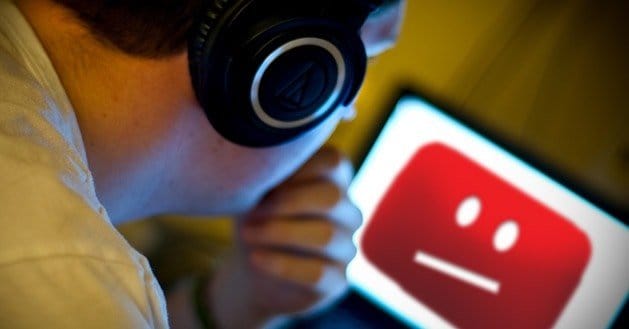 Written by ContentPowered.com
Written by ContentPowered.comYouTube sees hundreds of thousands of new videos every day. Hundreds of years worth of videos pass through their content ID system to be scanned for copyright violations and inappropriate content. With so much at stake, with such a flood, you might think it would be easy to slip through the cracks and keep a rule-bending video live. In reality, YouTube is very, very good at spotting violations and removing them.
Reasons for Video Removal
There are three primary causes of video removal. The DMCA takedown and the Content ID match are obvious. The third is a violation of either the YouTube Terms of Service or their Community Guidelines. Each has a specific target, a specific punishment and a specific way of dealing with removal.
In order to determine why your video was removed, if you have a removed video, you need only click to visit your video manager. The video manager will tell you if you have a removed video and why that video was removed.
Removal Due to DMCA
DMCA stands for the Digital Millennium Copyright Act of 1998. It is the largest pillar in the labyrinth that is copyright law, and it is cited as the law behind most copyright flags. Essentially, the law says that YouTube is not responsible for the copyright policing of the content on their site. They cannot be sued by, say, the EMI for a video a user uploads using EMI’s music. In order to maintain that protection, however, YouTube needs to comply with the DMCA rules. If EMI files a takedown notice, YouTube has to remove the offending video.
A DMCA removal is also known as a copyright violation in the internal YouTube systems. If one of your videos is removed due to a DMCA violation, your account will earn a copyright strike. Copyright strikes flag your account and restrict access to certain YouTube features. Three strikes and your account will be terminated completely. YouTube offers a counter-notification system for an appeal, and you can contact EMI – or whoever filed the notice – to ask for the strike to be retracted. Otherwise, a strike will expire after six months in good standing, assuming you completed YouTube’s copyright school.
Preventing a DCMA Takedown
There are two schools of thought when it comes to avoiding a DMCA takedown. The first is to comply with the rules on every front. The second is to exploit loopholes to avoid detection.
Complying with the rules is the better idea; it’s like the difference between white hat and black hat SEO. It’s more work to comply, but you will have to settle for compromises in some cases, including the inability to monetize certain videos or use certain content. Avoid using anything copyrighted outside of fair use, and limit the amount you do use for fair use. Whenever possible, create your own content. If you want to use copyrighted music, purchase a license to use that music.
The alternative is the “black hat” method, wherein you try to avoid detection. Mirroring your copyrighted content, distorting it in some way or obscuring it so it isn’t detected by the automatic scanners can help keep your video up longer. You’re never safe, however, and your video can be removed at any time, no matter how many or how few views it has acquired or whether or not it has been monetized.
If your video is removed, your best bet is to file a counter-claim and hope you’re in the right. Otherwise, you’ll simply have to deal with the strike and the removed video. If you upload the video again, and it is removed a second time, that will be a second strike.
Content ID Removal
A Content ID match is a result of the automatic scans YouTube performs on videos as they pass through the system. In particular, they are looking for music or video content claimed by a company as copyrighted. For example, Warner Brothers will upload their video game cutscenes and movie content to YouTube’s Content ID system when that media is released. If you were to then post a video including some of that content, it would match YouTube’s records and your video would be flagged.
A Content ID match has a few possible results. The studio claiming copyright gets to decide the action taken. They can choose to have your video removed, they can choose to track it to see what you’re doing with their content – to make a decision later or to determine your content is fair use – or they can choose to monetize your content. Warner Brothers used to monetize flagged videos, for example, but has transitioned to having them taken down.
Preventing Content ID Flags
Unfortunately, the Content ID system is somewhat flawed. It has been known to flag and remove videos when the content in those videos is completely different from what is claimed to be present. Also unfortunately, the Content ID system is almost completely automated and is flooded with counter-claims, making it difficult or impossible to appeal a flag.
Typically, your best bet to avoid a Content ID flag is to create original audio and video for your content. When this isn’t possible, use free use content or license official content. Avoid posting anything in totality or unedited, as this is likely to be deemed piracy. Avoid monetizing video that relies heavily on content from a copyrighted source. Be aware of the producer of the content you use, as well; some, like Warner Brothers, are more prone to action than others may be.
Disputing a Content ID match gives the copyright holder three options; they can ignore the claim and leave your video alone, they can press the issue and attempt to sue you, or they can send a DMCA notice and have your video removed. Almost always they will take the third option, though some will go for the first. Actual legal battles are very rare.
Guidelines and ToS Removal
YouTube as two sets of rules you must follow to use the platform. The general Terms of Service outline what is and isn’t acceptable use of the site. It outlines their compliance with the DMCA, the rules you must abide by to use the social networking aspects of the site, the penalties for failure to comply and more. The second are the community guidelines, which outline the type of content you can use. Essentially:
- You cannot post pornography or sexually explicit content, regardless of copyright.
- You cannot post content including illegal actions, including animal abuse, drug abuse, underage drinking, bomb creation and more.
- You cannot post graphic and gratuitous violence. Virtual violence, such as in a movie or video game, does not count. Posting the ISIS beheadings is a violation, not to mention in poor taste.
- You cannot post shock or gore, such as a gruesome accidence scene.
- You must respect copyright.
- You cannot post hate speech or assault content.
- You should avoid anything that may be considered spam.
YouTube tends to side with the spirit of the law; trying to sneak a video through a loophole will just earn you a penalty and the loophole will be closed.



